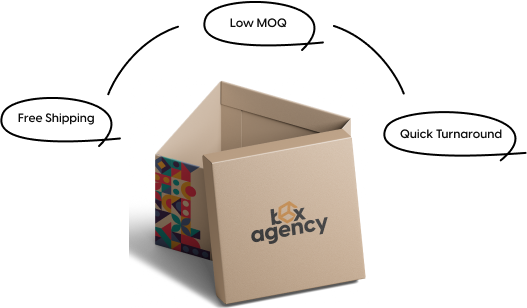What Is Cardstock: Definition, Manufacturing, Types and Uses
There are different types of paper and cardboard used to create protective coverings for products in the world of packaging materials. Some of these materials are thick while others are light and flexible. Among the most popular packaging choices is cardstock. This material is broadly used for creating strong and durable packaging boxes and greeting cards. But what precisely is cardstock and how is it different from other types of paper? Let’s discuss some interesting points.
What is Cardstock?
Cardstock is a type of thick paper that is more durable than standard paper and this is not as thick as cardboard. It is utilized for products that require strength such as packaging and business cards. Cardstock is accessible in a variety of finishes and wights which makes it a flexible option for many different applications. It is a popular choice since it combines quality with ease of use in printing and crafting projects.
What is the Manufacturing Process of Cardstock?
The method of making cardstock forms with wood pulp that is prepared to make paper. The pulp is mixed with water to form a slurry which is then spread onto a large flat surface. This mixture is dried and pressed to extract extra moisture and compress the fibers. Once dried the paper is cut into sheets of varying sizes. At this point, different coatings and finishes can be applied depending on the desired look and surface of the cardstock. The final product is a durable and heavy paper appropriate for different uses.
What are the Different Types of Cardstock?
You can get distinct types of cardstocks in bookshops, online, or in art & creates stores. Let us have a see at the different types of packaging material cardstock based on shape, texture, size, coatings, and weight. The cardstock paper measurements are usually measured in inches while the weight ranges from 60 lbs. to 120 lbs. The original weight of the cardstock is 80 lbs. This type of paper can be obtained in the following sizes:
6 x 6 inches
8 x 8 inches
12 x 12 inches
81⁄2 x 11 inches
The scrapbook is produced from cardstock paper, which is usually 12 x 12 inches in size. Following are a few types of cardstock paper depending upon its structure and finish:
-
Smooth Cardstock
Smooth cardstock contains a sleek and even surface making it perfect for detailed printing and writing. It is made by pressing the paper fibers very tightly together to make a flat and uniform finish. Its smooth surface is great for applications where sharp text and clear images are necessary.
-
Matte Cardstock
Matte cardstock has a soft and non-reflective surface that gives a subtle look. It is created by not applying a glossy finish which makes it perfect for projects that require an advanced and matte appearance. It is regularly used for invitations and business cards that require a more professional feel.
-
Textured Cardstock
Textured cardstock highlights a rough or embossed surface. It can be made by including texture during the manufacturing process or by applying a design after the paper is made. This type of cardstock is great for projects that require a more material and creative feel such as scrapbooking or high end greeting cards.
-
Glossy Cardstock
Glossy cardstock features a shiny and smooth finish that reflects light. This type of cardstock is commonly used for special materials like brochures and flyers. It is made by coating the paper with a glossy finish which improves the colors and images printed on it by giving a high quality appearance.
-
Watercolour Cardstock
Watercolour cardstock is outlined to handle wet media like watercolor paints. It is thicker and more absorbent than normal cardstock and is made to prevent the paint from dying through. Specialists frequently use watercolor cardstock for creating wonderful works of art since it gives the texture and durability needed for painting.
-
Metallic Cardstock
Metallic cardstock includes a glossy and metallic finish that gives a special look to printed materials. It is frequently used for formal invitations or decorative pieces. The metallic surface reflects light and includes elegance in any project which makes it a popular choice for special events.
-
Glitter Cardstock
The glitter cardstick is coated with tiny glitter particles that make it sparkle. It is often used for scrapbooking and creative arts and crafts. The glitter finish includes an extra touch of fun and glamour to any project that makes it a favorite for celebrations like birthdays and holidays.
What are the Uses Of Cardstock?

Cardstock has a range of uses because of its strength, durability, and versatility. Here are some common ways it is used:
-
Greeting Cards
Cardstock is perfect for greeting cards due to its thickness which allows for secure folding and printing. It guarantees the card remains intact during mailing. Its sturdy base supports dynamic designs and thoughtful messages. The material is durable that prevents bending or any kind of harm and it makes a difference and lasting impression.
-
Business Cards
Business cards made from cardstock offer both durability and a professional appearance. The material’s weight passes on quality and reliability. Cardstock’s sturdy nature guarantees cards remain in great condition over time. It gives a great surface for clear and sharp printing. Cardstock makes a strong statement in business networking.
-
Postcards
Postcards are commonly printed on cardstock for their quality and capacity to ensure handling. The material guarantees the plan and message remain intact during mail transit. It gives a strong base for both pictures and content. Cradstock makes a difference prevent bending or tearing. It ensures postcards arrive looking good and appealing.
-
Invitations
Cardstock is the best material for invitations as well including a premium feel. Its thickness gives invitations a luxurious and premium look. Cardstock holds intricate designs and fine details without any issues. It adds a personal touch to special occasions. Cardstock makes the invitation memorable with premium visuals whether for weddings or birthdays.
-
Packaging
Cardstock is commonly used in packaging for its durability and lightweight properties. It offers protection for products while maintaining an elegant look. The material can be printed with custom designs or branding. It is simple to shape into different packaging forms and it guarantees items are safely shipped in appealing packaging.
-
Scrapbooking
Cardstock is a staple in scrapbooking due to its quality and flexibility. It gives a durable surface for adhering images and embellishments. The variety of colors and surfaces upgrades creative projects. Cardstock guarantees that scrapbook pages are durable and enduring. It is perfect for custom layouts and decorative designs.
How Thick is Cardstock Paper?
Even though this varies from shop to shop and country by country, it is more often than not measured in points or mils which is defined as how thick the sheet is in thousands of an inch. For example, 8 mils or focuses is .008 of an inch. So if you are wondering how thick 16pt card stock is, at that point, you just have to move the decimal over 3 spots to the left. Here are some common thickness ranges:
- 12pt card stock, or .012 mil
- 14pt card stock, or .014 mil
- 16pt card stock, or .016 mil
What is the Difference Between Coated and Uncoated Cardstock?
Coated cardstock encompasses a layer of coating connected to its surface which makes it smooth and shiny. Uncoated cardstock does not have this coating and contains a more natural and matte look.
|
Comparison |
Coated Cardstock |
Uncoated Cardstock |
|
Surface |
Smooth and shiny due to a coating |
Matte and natural finish without coating |
|
Appearance |
Makes printed colors more vibrant and enhances designs |
More classic or rustic look |
|
Common Uses |
Printing vibrant designs, brochures, greeting cards |
Stationery, business cards, and projects needing a classic look |
What is the Difference Between Cardstock & Cover Stock?
Cardstock and cover stock are more often than not utilized interchangeably but there’s a difference.
|
Comparison |
Cardstock |
Cover Stock |
|
Definition |
General term for thicker paper |
A specific type of thick paper used for covers & binding |
|
Weight & Durability |
Typically lighter than cover stock |
Heavier, more durable than standard cardstock |
|
Common Uses |
Invitations, greeting cards, packaging, scrapbooking |
Book covers, heavy-duty packaging |
What is the Difference Between Cardstock and Construction Paper?
Whereas both cardstock and construction paper are thick papers, construction paper is ordinarily more textured and frequently comes in bright colors.
|
Comparison |
Cardstock |
Construction Paper |
|
Texture |
Smooth and durable |
More textured, rougher finish |
|
Color |
Available in various colors and finishes |
Often comes in bright, vibrant colors |
|
Common Uses |
Professional printing, packaging, scrapbooking |
Art projects, crafts, children’s projects |
|
Durability |
Stronger, holds up well for detailed printing |
Not as durable, and not ideal for detailed prints |
What are the Available Finishing Options for Printing Cardstock?
There are different finishing options to consider when printing on cardstock.
- Embossing
Makes a raised design or design on the paper.
- Debossing
Makes an indented design or pattern.
- Foil Stamping
Adds metallic foil to text or designs for a shiny impact.
- Varnish
Adds a thin coating to upgrade color and provide protection.
- Lamination
Adds a protective coating to make the cardstock more durable and water-resistant.
Why Choose Cardstock Material for Packaging Boxes?
Cardstock is a fabulous material for packaging since it is both durable and lightweight. It gives sufficient protection for items while remaining easy to handle and cost-effective, cardstock ensures that the item stays safe while moreover allowing for dynamic printing whether it is for retail packaging or custom boxes.
What Kind of Cardstock Paper is Right For Me?
The right type of cardstock depends on your specific needs. If you need a smooth finish for professional printing smooth cardstock is a great choice. For a more advanced and non-glossy look, matt cardstock works well. If you need a surface that includes creativity, textured cardstock is the way to go. Consider your project’s requirements in terms of appearance and strength when choosing the right type of cardstock.
Where To Get Cardstock Packaging Boxes?
You can find cardstock packaging boxes through different providers online or at nearby packaging stores. Box Agency offers custom printing options, so you can customize the boxes with your brand logo and other details. We offer quality cardstock to guarantee the boxes meet your needs.




